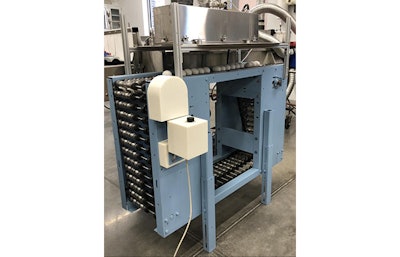
Pulsed ultraviolet light could be a viable alternative to current antimicrobial technologies used to kill pathogens on eggshells, according to a recent study published in Poultry Science.
The technology was successfully tested in simulated processing conditions at Pennsylvania State University and is designed so it can be easily scaled up or customized for commercial installations.
“We've used ultraviolet light before but pulsed ultraviolet is interesting in that it's a broader spectrum. It's between 100 and 1,100 nanometers of light,” Paul Patterson, professor of poultry science, College of Agricultural Sciences, Pennsylvania State University, said.
“And it is delivered in very short pulses between 100 nanoseconds to two milliseconds. The majority of the energy – over 50% of the energy – is in the ultraviolet (UV) region which is really where the killing potential is for microbial organisms.”
The pulsed UV technology could be an alternative over the egg processing approaches in use today, resulting in better egg safety for consumers, he added. Currently, the egg industry decontaminates eggs using sanitizers and detergents, and sometimes low-intensity UV light is added as an additional antimicrobial step.
Able to decontaminate shell eggs…
During the study, the researchers treated shell eggs inoculated with nonpathogenic bacteria strains with pulsed UV light derived from a xenon flashlamp. The eggs passed under the flashlamp on a modified egg-carrying conveyer, which ensured the eggs underwent a complete rotation under the flashlamp.
The treatment successfully inactivated two different microbial strains.
And hatching eggs
The study also evaluated the safety of pulsed UV light technology on hatching eggs. The researchers treated four batches of 125 fertile eggs with pulsed UV light. The eggs were then placed into a commercial incubator under normal conditions.
There were no negative effects seen on fertility, hatchability, hatch, chick livability or average bird weight. In addition, the research demonstrated that the small amount of heat generated by the flashlamp did not affect the survival rate of the embryo.
“When we tested the safety with a hatching eggs, even with a 10-fold greater energy than used in the table egg research, there was no negative impacts on the embryos or baby chicks,” Patterson explained.
“The chicks were fine with no issues even with the 10-fold increase. We did see greater temperatures – of 7 to 8 ℃ – with greater pulsed ultraviolet light. However, we were still below incubating egg temperatures, so in fact this may be beneficial to the incubation process.”
Like what you just read? Sign up now for free to receive the Poultry Future Newsletter.


















